In recent years, the welding industry has seen a surge in interest in hybrid laser-TIG welding, a cutting-edge technology that combines the benefits of two different welding techniques.
By merging the precision and speed of laser welding with the flexibility and versatility of Tungsten Inert Gas (TIG) welding, this process has the potential to revolutionize the way we manufacture and join metal components.
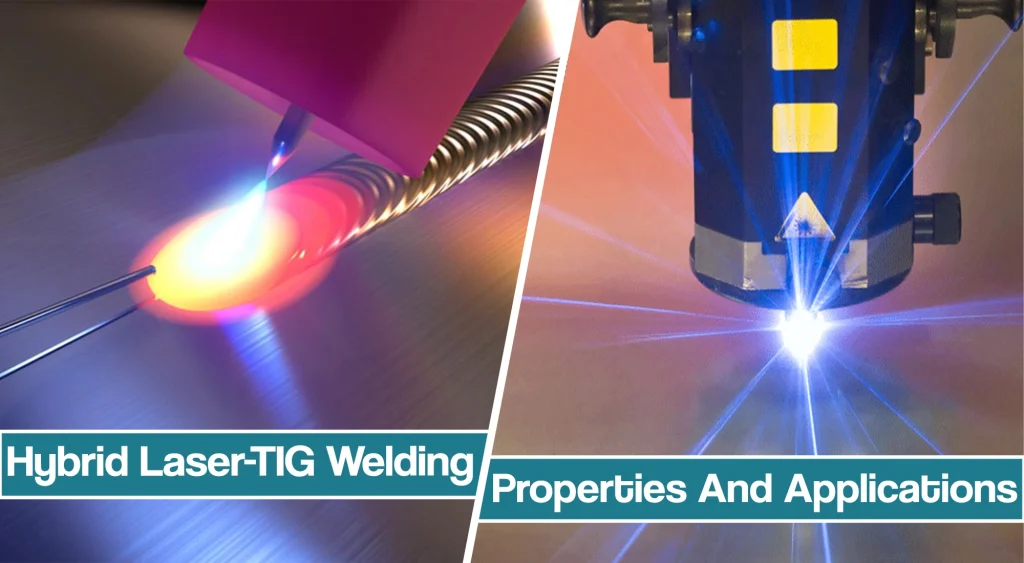
With its ability to produce high-quality welds on a variety of materials, including thick plates and dissimilar metals, hybrid laser-TIG welding is quickly gaining popularity in industries such as aerospace, automotive, and marine engineering.
In this article, we will delve deeper into the science behind this innovative process and explore its numerous applications and benefits.
What Is Hybrid Laser-TIG Welding, And How Does It Work?
Hybrid laser-TIG welding is a welding process that combines the benefits of two different welding techniques: laser welding and Tungsten Inert Gas (TIG) welding. In this process, a high-powered laser beam and a TIG torch are used together to create a highly precise and efficient welding operation.
The hybrid laser-TIG welding process typically starts with the laser beam, which is focused on the welding joints. The laser beam melts the metal and creates a molten pool, which is then controlled by the TIG torch.
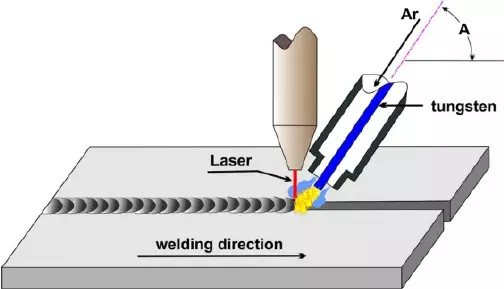
The TIG torch uses a tungsten electrode to create an arc, which produces heat and melts the metal. The arc also provides a controlled environment to protect the weld from contamination, using an inert gas such as argon or helium.
The combination of the laser and TIG welding techniques allows for greater control over the welding process. The laser provides a high-energy heat source that quickly melts the metal, while the TIG torch supplies a low-energy, precise arc plasma to control the weld pool and add filler material as needed. The TIG torch can also be used to clean the weld area before welding to ensure a high-quality weld.
Hybrid laser-TIG welding is particularly effective for welding dissimilar materials, such as aluminum and steel, because the laser provides a high-energy heat source that can overcome the differences in thermal conductivity and melting points between the two materials. The TIG torch can then be used to precisely control the weld pool and add filler material to create a strong, high-quality weld.
Types Of Lasers Used In Hybrid Laser Arc Welding
The most common type of laser used in LBW and hybrid laser-TIG welding is the Nd: YAG laser. This type of laser emits a high-powered, focused beam of light with a wavelength of 1.06 microns, making it ideal for welding thin to medium-thickness metals such as steel, stainless steel, and aluminum.
Another type of laser commonly used in welding is the fiber laser. These lasers operate on a similar principle as Nd:YAG lasers but with a higher power density and a wavelength of 1.07 to 1.1 microns. This makes them suitable for welding thicker materials or for precision welding of small parts.
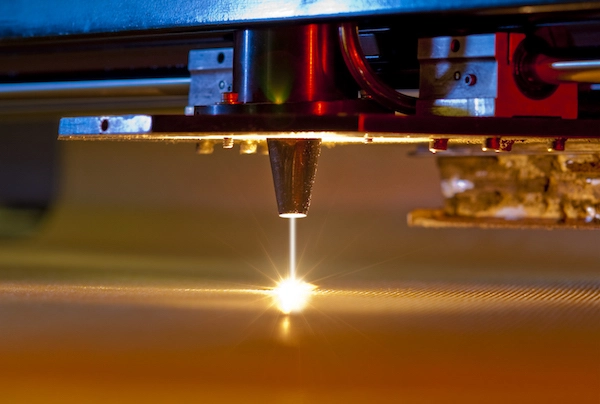
In addition to these types of lasers, diode lasers, and CO2 lasers are also sometimes used in welding applications. Diode lasers have a lower power density than other types of lasers but can be more efficient, while CO2 lasers have a longer wavelength (10.6 microns) and are primarily used for welding plastics and non-metals.
Types Of TIG Welding Used In Hybrid Laser-TIG
There are several types of TIG welding techniques that can be used in laser arc hybrid welding, each with its own advantages and disadvantages. Some of the most common types of TIG welding used in hybrid laser-TIG welding are:
- Pulsed TIG Welding: In this technique, the TIG torch emits a series of pulses of high current, followed by periods of lower current. This allows for greater control over the heat input and weld penetration depth, which can result in improved weld quality and reduced distortion.
- AC/DC TIG Welding: This technique uses an alternating current (AC) to clean the surface of the metal and a direct current (DC) to weld the metal. This allows for greater control over the welding process and can be particularly effective for welding aluminum and other non-ferrous metals.
- Double Shielded TIG Welding: This technique uses two layers of shielding gas, typically a combination of argon and helium, to protect the weld from contamination and provide better arc stability. This can result in improved weld quality and can be particularly effective for welding thin materials.
- Hot Wire TIG Welding: In this technique, a hot wire is added to the TIG welding process, which preheats the metal and allows for faster welding speeds and improved penetration. This technique is often used for welding thick materials or for high-speed welding applications.
- TIP TIG Welding: This technique uses a wire feeder to feed a continuously fed wire into the welding area. The wire is preheated and coated with a flux, which provides additional protection from contamination and improves weld quality.
Varieties Of Hybrid Laser-TIG Welding
The laser-leading hybrid process and the arc-leading hybrid process are two different types of hybrid welding processes that combine laser welding and arc welding techniques. The primary difference between the two processes is the type of heat source used to melt the metal.
In the laser-leading hybrid process, the laser beam is the primary heat source and is used to melt the metal.
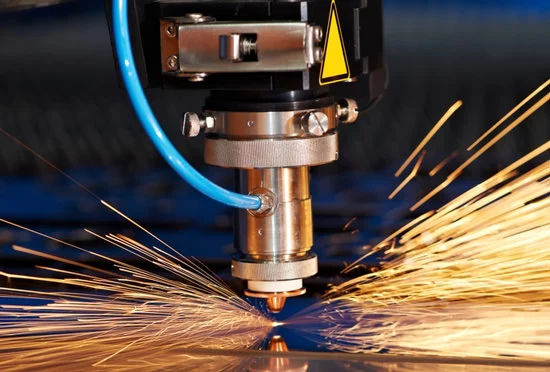
The arc weld process, such as TIG or MIG welding, is used to control the molten pool and add filler material as needed. This process is typically used for welding materials that are difficult to weld using conventional welding techniques, such as dissimilar metals or metals with high thermal conductivity.
In the arc-leading hybrid process, the arc welding process is the primary heat source and is used to melt the metal. The laser beam is then used to provide additional heat and control the weld pool. This process is typically used for welding thick materials, as the arc welding process can provide greater penetration than the laser welding process alone.
In addition, hybrid laser TIG welding can be separated by the type of laser that is being used. Therefore, we recognize CO2-TIG welding, YAG-TIG, Fiber Laser-TIG, and Pulsed Laser-TIG welding.
CO2 Laser-TIG Welding
CO2 laser-TIG welding is a hybrid welding process that combines the high-energy beam of a CO2 laser with the precise control of a Tungsten Inert Gas (TIG) welding torch. The process involves focusing the CO2 laser beam onto the workpiece, which heats the metal and causes it to melt. The TIG welding torch is then used to add filler material to the molten pool and control the weld puddle.
The CO2 laser produces a high-energy beam of light that is focused onto the workpiece using a series of mirrors and lenses. The laser beam is directed onto the workpiece at a specific angle, which allows it to penetrate deep into the metal and heat it quickly and efficiently. This high-energy beam is capable of producing temperatures in excess of 10,000 degrees Fahrenheit, which is hot enough to melt most metals.
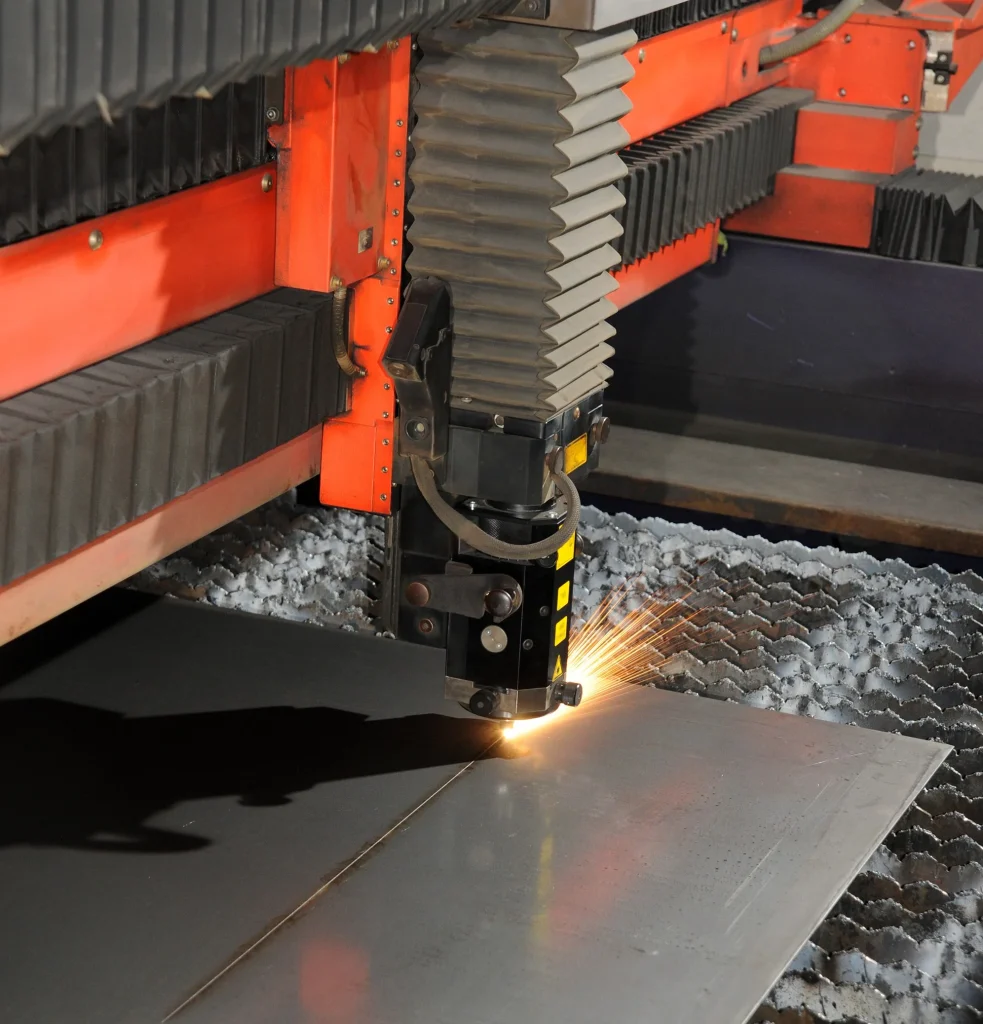
ND:YAG Laser-TIG Welding
ND: YAG laser-TIG welding is a hybrid welding process that combines the high-energy beam of a neodymium-doped yttrium aluminum garnet (ND: YAG) laser with the precise control of a Tungsten Inert Gas (TIG) welding torch.
The process involves focusing the ND: YAG laser beam onto the workpiece, which heats the metal and causes it to melt. The TIG welding torch is then used to add filler material to the molten pool and control the weld puddle.
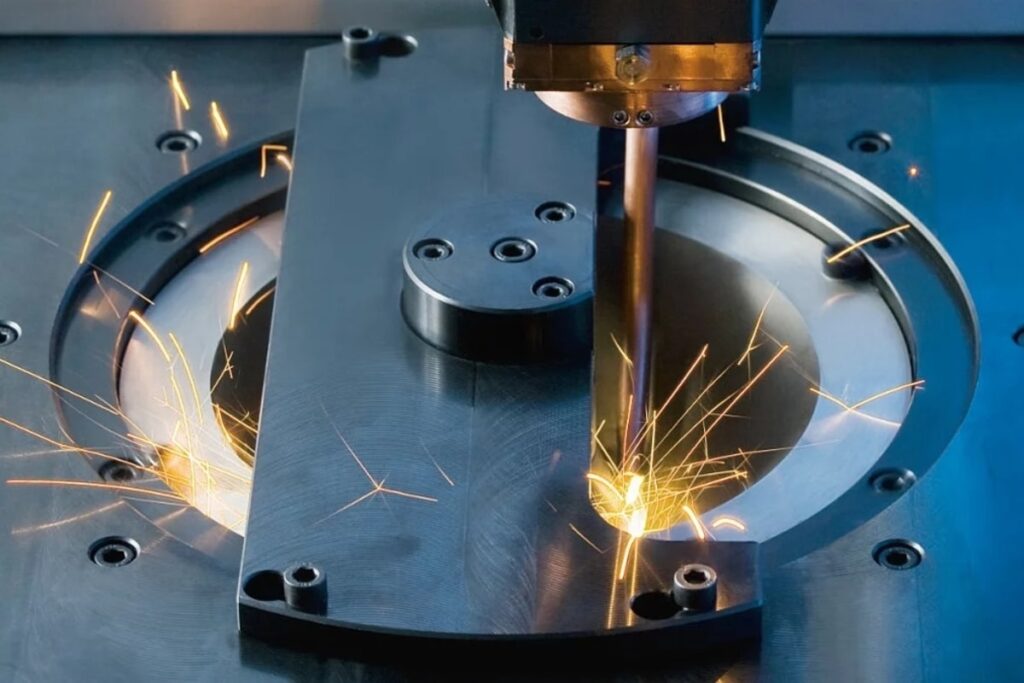
The ND:YAG laser produces a high-energy beam of light that is focused onto the workpiece using a series of mirrors and lenses. The laser beam is directed onto the workpiece at a specific angle, which allows it to penetrate deep into the metal and heat it quickly and efficiently. The ND:YAG laser emits a wavelength of 1.06 microns, which is well-suited for welding a variety of materials, including stainless steel, aluminum, and titanium.
Fiber Laser-TIG Welding
Fiber laser-TIG welding is a highly precise and efficient welding process that is well-suited for welding thin materials and producing high-quality welds. The combination of the fiber laser and TIG welding torch allows for precise control over the welding process and can produce welds that are strong, durable, and aesthetically pleasing. Additionally, fiber lasers have a high wall-plug efficiency, which means that they convert a high percentage of the input power into usable laser energy, making the process more energy-efficient than other laser welding methods.
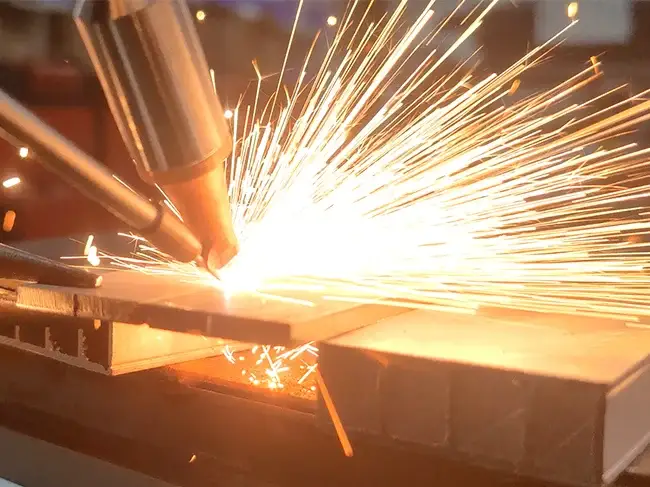
Pulsed Laser-TIG Welding
The pulsed laser produces a high-energy beam of light that is pulsed on and off rapidly. This rapid pulsing allows for precise control over the amount of heat that is applied to the workpiece, which can help prevent overheating and distortion of the material. Pulsed lasers can emit a range of wavelengths, which makes them well-suited for welding a variety of materials, including steel, aluminum, and titanium.
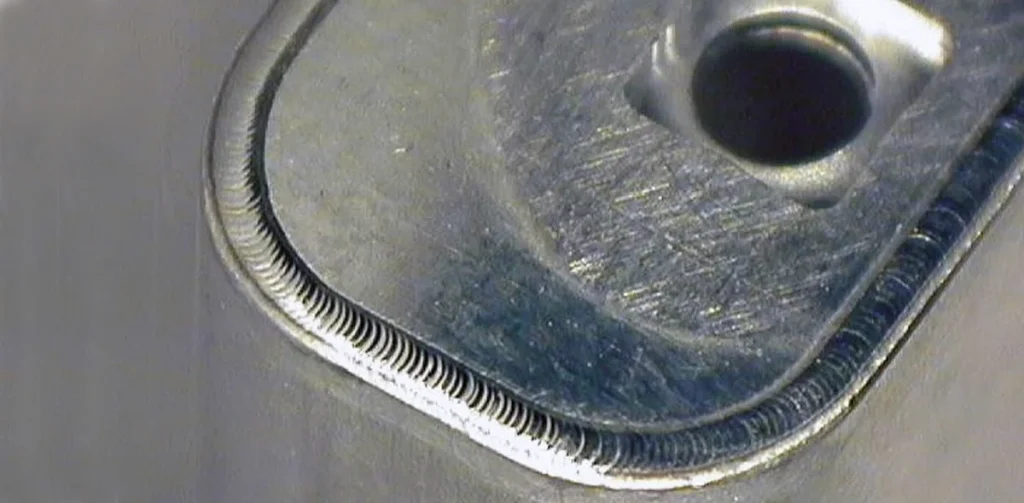
Pulsed laser-TIG welding is a highly precise and efficient welding process that is well-suited for welding thin materials and producing high-quality welds. The combination of the pulsed laser and TIG welding torch allows for precise control over the welding process and can produce welds that are strong, durable, and aesthetically pleasing.
Hybrid Laser-TIG Welding Parameters
The hybrid laser-TIG welding process involves several important welding parameters that must be carefully controlled to ensure high-quality welds. These parameters include:
- Laser power
- Laser focal point position
- TIG welding current
- TIG welding gas flow rate
- Welding speed
Controlling these welding parameters is critical to ensuring that the hybrid laser-TIG welding process produces high-quality welds. Precise control of these parameters requires skill and expertise, and experienced welders are necessary to ensure the success of the process.
Welding Electrodes
The welding electrode used in TIG welding is typically made of tungsten and is non-consumable. This is because tungsten has a very high melting point and can withstand the heat of the electric arc used to create the plasma. Some of the additives are thorium oxide or zirconium. It is important that the right electrodes are chosen with respect to current in order to avoid instability.
The choice of electrode depends on the material being welded, the welding process parameters, and the desired weld characteristics. Welding experts will select the appropriate electrode based on their experience and knowledge of the welding process.
Torch Travel Angle
The correct travel angle of the torch in hybrid laser-TIG welding can vary depending on several factors, including the material being welded, the welding process parameters, and the desired weld characteristics. Experienced welders will adjust the torch angle as needed to ensure that the weld is strong and well-formed.
During welding, the electrode and welding rod must be held at special angles for welding a bead on a plate. However, for butt welding, the angle of the torch is kept fixed. The torch is held 60º – 75º from the metal surface. This is the same as holding the torch 15º – 30º from the vertical.
Travel Speed
The correct travel speed in the hybrid laser-TIG welding process can vary depending on several factors, including the material being welded, the thickness of the material, the welding process parameters, and the desired weld characteristics. However, in general, the travel speed should be adjusted to achieve the desired weld penetration and bead width.
It must be noted, however, that in the welding of magnesium alloys using low-power laser-TIG hybrid welding, the welding arc is stable even at high welding speeds in the range of 1500-200 mm/min.
Laser Power
The usual laser power in hybrid laser-TIG welding can vary depending on several factors, including the material being welded, the thickness of the material, and the desired weld characteristics. However, laser powers typically range from 1 kW to 10 kW.
The laser power has a significant impact on the weld characteristics in hybrid laser-TIG welding. The laser beam provides the heat input to the weld, and higher laser power generally results in deeper weld penetration and faster welding speeds. However, higher laser power can also lead to greater heat input, which can result in larger heat-affected zones (HAZs) and greater distortion of the material being welded.
Shielding The Weld
The preferred shielding gas in hybrid laser-TIG welding is typically argon. Argon is an inert gas that provides excellent protection for the weld zone by preventing contamination from atmospheric gases such as oxygen and nitrogen.
The shielding gas is typically supplied through the TIG welding torch, and the gas flow rate is controlled to ensure that the weld zone is adequately protected. The shielding gas also helps to stabilize the arc and prevent spatter, which can lead to defects in the weld.
In some cases, helium may be added to the shielding gas mix to increase the heat input and improve weld penetration. However, the use of helium can also increase the risk of porosity in the weld, so it must be used carefully and in combination with other welding parameters.
Applications of Hybrid Laser-TIG Welding
Hybrid laser-TIG welding is a versatile welding process that can be used in a wide range of applications, including:
- Aerospace and defense industries: Hybrid laser-TIG welding is used to join various aerospace components, including aircraft fuselage panels, engine components, and structural components. The process is well-suited to these applications due to its ability to provide high-quality welds with minimal distortion.
- Automotive industry: Hybrid laser-TIG welding is used in the automotive industry to join body components, exhaust systems, and other components. The process is preferred for its ability to produce high-strength welds with minimal heat input and distortion.
- Medical industry: Hybrid laser-TIG welding is used in the medical industry to join various components, including surgical instruments, medical devices, and implants. The process is preferred for its ability to produce clean, precise welds with minimal heat input and distortion.
- Electronics industry: Hybrid laser-TIG welding is used in the electronics industry to join various components, including printed circuit boards and electronic enclosures. The process is preferred for its ability to produce high-quality welds with minimal heat input and distortion.
Conclusion
Hybrid laser welding is a highly precise and versatile welding process that combines the benefits of both laser and TIG welding. By using a laser beam to preheat the material and a TIG arc to join the material, the hybrid process can provide high-quality welds with minimal heat input and distortion especially when using autogenous laser welding.
The laser hybrid welding process is well-suited to a wide range of applications, including aerospace, automotive, medical, and electronics industries, where precision, reliability, and high-quality welds are essential. With the ability to control various welding parameters, including laser power, welding current, high welding speed, and shielding gas flow rate, experienced welders can optimize the welding process to achieve the desired weld characteristics.
Resources
- https://www.twi-global.com/what-we-do/research-and-technology/technologies/welding-joining-and-cutting/lasers/hybrid-laser-arc-welding
- https://lutpub.lut.fi/bitstream/handle/10024/91432/Laser-TIG%20hybrid%20welding%20process.pdf?sequence=2
- https://blog.perfectwelding.fronius.com/en/laser-hybrid-welding/
- https://www.laserline.com/en-int/laser-hybrid-welding/
- https://www.keyence.com/ss/products/measure/welding/laser/hybrid.jsp




